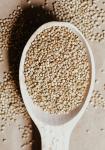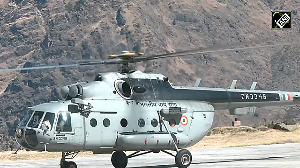The incident occurred on the first anniversary of Saddam Hussein's capture.
Meanwhile, American officials confirmed that 7 US Marines were reported killed in two separate incidents in Al Anbar province, which had been relatively calm after the recent American blitzkrieg on Fallujah, while the British Consulate in Basra was hit by mortar fire.
US officials also denied reports that Saddam Hussein and his captured loyalists were on a hunger strike at an undisclosed location in Iraq to protest against ill-treatment.
Saddam's trial is likely after the elections in Iraq, slated for January 30.
In another development, US World and News Report cited military intelligence sources as saying that Saddam had planned the insurgency long before the invasion of Iraq and his capture by US forces.
The Iraqi dictator dispatched more than 1,000 security and intelligence officers to two military facilities near Baghdad where they underwent two months of guerrilla training, the magazine said.
"Saddam regime elements are still playing a significant role in the insurgency," said Michael Rubin, a former Pentagon official who recently returned from a fact-finding mission to Iraq.
"Of course, there are many other insurgents, but most certainly, Saddam planned his insurgency long before we invaded Iraq," he added.
Apart from establishing "new subversive organisations to carry out attacks against coalition forces," Saddam also directed regime leaders and supporters to use Sunni mosques for secret meeting places and to hide weapons, the magazine said.
Reports indicate that Saddam's forces were working with foreign terrorists, including al Qaeda, in carrying out attacks, it said.







 © 2025
© 2025